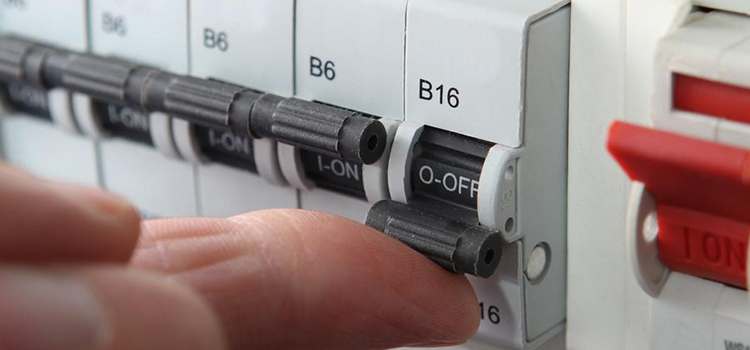How to Test a Fuse Without a Multimeter? | A Step by Step Guide
There are several ways to test a fuse without a multimeter including the light bulb technique, using an ohmmeter, visual inspection, etc. Using a fuse tester would be more accurate than using other instruments.
A fuse is an electrical safety device that helps to avoid overcurrent. Operating equipment with a blown fuse may result in overcurrent, ruining the operation of your equipment. Testing a blown fuse frequently necessitates the use of a multimeter; however, the test can be performed without a multimeter.

Steps for Testing a Fuse Without a Multimeter
A voltage tester and an ohmmeter are two common pieces of equipment for testing defective fuses when you do not have a multimeter. To avoid overloading your gadget, it is always necessary to evaluate the quality of your fuse and establish if it is broken or in good working order.
Swapping with a Sound Fuse
Take the suspected fuse out of the circuit. Make a mental note of which fuse is which. Then determine the function of an identical fuse and the circuit it protects. Replace the suspected fuse with the known good fuse in the functioning circuit. If the circuit still works with the suspected fuse, it means the fuse is fine.
If the previously working circuit no longer works with the fuse, the fuse has blown and must be replaced. Put the healthy fuse in the suspected circuit only if you’re willing to have that fuse blow as well. Sometimes fuses become weak and blow, but most of the time there are other causes for the fuse to blow.
Using a Light Bulb
The safest setup for testing is a finger-safe terminal with a suitable voltage bulb. Make sure that the improvised tester is wired in such a way that no exposed metal could shock you or cause a short circuit. Connect one wire to the neutral/common side of the fuse and one wire to the line side.
If there is voltage, the lamp will light up. Transfer the wire from the fuse’s line side to the load side. The light will turn on if the fuse is good. When you don’t have access to a solenoid type meter, this test is a wonderful technique to determine whether a voltage reading is actual or “ghost” voltage.
Visual Inspection
Glass fuses typically have a single metal fuse link. Remove the fuse safely and inspect it thoroughly in bright light. Sometimes the connection has a difficult-to-see break, and other times the glass is blackened from the fuse bursting. The size of the fuse link will vary depending on the amperage of the fuse.
A break in a 10A fuse is significantly easier to detect than a failure in a 250mA fuse. A magnifying glass, or even zooming in on an image shot using a phone camera, can help with this endeavor.
Using an Ohmmeter
Set your ohmmeter’s resistance setting to the lowest scale. It will usually have (Greek letter omega) for resistance. When testing a fuse, connect the ends of each ohmmeter cable to the fuse’s opposing ends. A value between 0 and 2 shows that the circuit is in good working order. The circuit is defective if you see ∞ or OL.
Using a Fuse Tester
This is the most accurate technique to test a fuse if you have a fuse tester at home. All you have to do is take the fuse from the apparatus and insert it in the fuse tester. If the tester is working properly, it will light up. Otherwise, it will not illuminate, indicating that the fuse has blown and must be replaced.
However, before proceeding with any testing, ensure that the fuse tester is not malfunctioning. You may do this by inserting a functional fuse into it, and the tester should light up. Otherwise, replace the fuse tester.
Check A Car Fuse Without A Multimeter
All of the procedures discussed above, namely the swapping technique, visual inspection, and the use of a fuse tester, can be utilized to verify the car fuse. However, keep in mind that in order to use any of these ways, you must first remove the fuse, which can be a time-consuming operation.
Test A Thermal Fuse Without A Multimeter
This can be accomplished by disconnecting the wires from the fuse and connecting them using a jumper wire. If the item, such as a dryer, begins to work normally as a result of this, the thermal fuse must be replaced.
However, operating the dryer without a thermal fuse is not recommended because it can cause catastrophic damage to not only your dryer but also your house wiring. So, rather than bypassing the thermal fuse, my advice is to always test it with a multimeter.
Frequently Asked Questions
Can you test a fuse with a battery tester?
Touch one probe to each contact on a fuse and monitor the reading, just like a continuity tester. An extremely low value of 1 ohm or less indicates that the fuse is in good working order; if it is blown, the reading will be infinite, or the maximum the meter would display.
Conclusion
When your result shows that the fuse is blown, you should change the fuse. After you test a fuse without a multimeter, if it’s a rewireable fuse, you can rewire it using the proper fuse wire grade. And if it’s a cartridge fuse, get a replacement of the same rating and install it.
Subscribe to our newsletter
& plug into
the world of circuits